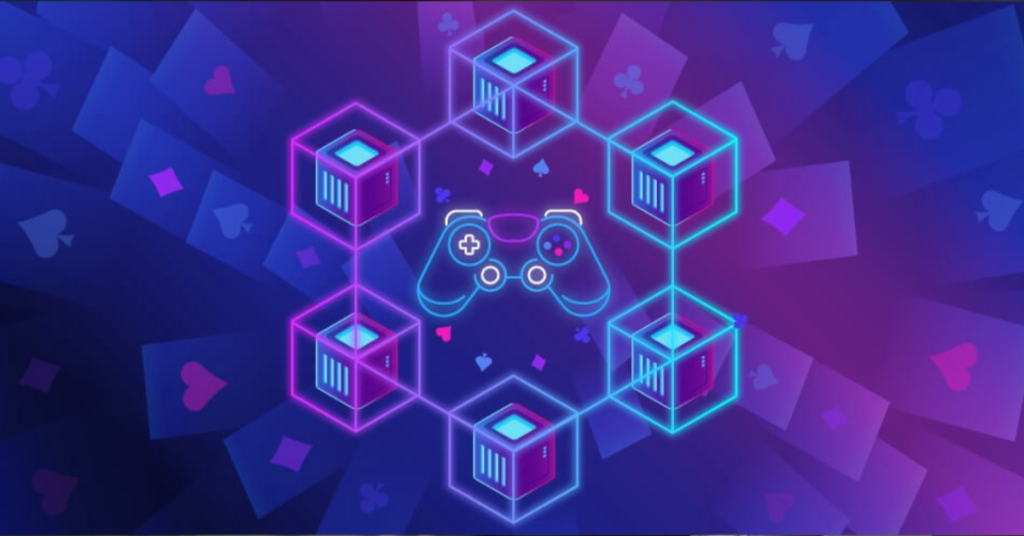Did you know that a World of Warcraft nerf sparked the creation of Ethereum, the second-most popular cryptocurrency in the world? Vitalik Buterin had played the famous game for years, but one day its developer, Blizzard, deleted a Siphon Life magic talent from one of his warlocks, therefore weakening his character and erasing many hours of labor.
“I wept myself to sleep, and I knew on that day what horrors centralized services may bring. “I quickly made the decision to leave,” Buterin stated in his about.me page. Over the years, he created a concept for a new cryptocurrency that would allow developers to construct any kind of code on top of a distributed ledger. Today, Ethereum drives a trillion-dollar economic ecosystem that competes with financial behemoths such as Visa and Stripe, and is regarded as the foundation of Web3, a developing open-source, decentralized internet.

It is also the foundation of GameFi, the newest trend in game production, which offers players the opportunity to earn money while having fun via blockchain-based games – similar to play-to-earn games.
Just what are these “Play to Earn” games?
“Play-to-earn” games (or top NFT games) are online games in which players may earn prizes with real-world value by performing tasks, fighting other players, and advancing through different game levels. These prizes consist of in-game assets such as crypto tokens, virtual land, skins, weaponry, and other non-fungible tokens. Due to the decentralized structure of these games, users may purchase, transfer, and sell in-game assets for real money outside of the game’s virtual universe.
Classic versus “Play to Earn” Games
Longtime blockchain-based company consultant Olga Vorobyeva defined conventional gaming as a “closed-end model.” To progress or earn rewards, players must spend a significant amount of time “grinding” and doing repeated chores inside the game. As was the case with Vitalik Buterin, players are not permitted to transfer or sell these assets, and they are subject to the game businesses, who have the implied authority to shut down or alter the world anytime they see fit.
Play-to-earn games “return value to the gamers,” according to Vorobyeva of Built In. In-game assets such as crypto tokens, virtual land, avatars, weapons, and other non-fungible tokens (NFTs) may be earned by fulfilling tasks, engaging in combat with other players, or advancing through different game levels. And unlike conventional games, the decentralized structure of play-to-earn games enables players to purchase and transfer in-game assets outside of the virtual realm of the game.

“Everything blockchain touches introduces decentralization and autonomous governance to the business,” Vorobyeva told Built In, adding that it has already transformed the music and art industries. It is now time for gaming.
Vorobyeva is not formally trained as a game designer, but she is an ardent gamer who oversaw a private World of Warcraft server with 300,000 users for a decade. With a degree in finance and economics, she entered the crypto business in 2016 and feared she was “too late” to the space race. Obviously, she could not have realized at the time that the business had not yet commenced in earnest.
According to game designer Tracy Spaight, GameFi is one of the fastest-growing parts of the video game business today. Spaight is the head of gamification at Synesis One, one of the first decentralized autonomous organizations, or DAOs, for data yield farming, after more than two decades in the industry. Although he said that there is still a great deal of “institutional conservatism” among veterans of the gaming business, he is enthusiastic about the “new form of ownership” afforded by the play-to-earn gaming model.
Play-to-earn games constitute their own virtual economies. They have their own crypto tokens, which are based on the blockchain of a certain cryptocurrency (such as Solana, Ethereum or its layer 2 chain Polygon, or Immutable X), and their tokenomics (supply and demand) differ. All of these in-game assets have the potential to give players a monetary advantage, whether it’s because they won a battle and earned crypto, sold an in-game NFT on a marketplace, or paid another player rent to use their virtual property.
Spaight told Built In that it’s been intriguing to see the emergence of large-scale virtual places where rather complicated economic systems and interesting large-scale online behaviors may arise. It has had a lengthy development.
‘Play-to-Earn”s Place in the Gaming Saga
At first glance, the play-to-earn approach may seem innovative and cutting-edge. However, it has deep roots in the history of massively multiplayer online games and role-playing games, or MMOs and RPGs, respectively.
Classics from the 1980s, such as Island of Kesmai, were regarded the forerunners of the genre, laying the groundwork for the deep gameplay play-to-earn games strive to accomplish. In the 1990s, graphical multi-user dungeons (MUDs) such as Meridian 59, EverQuest, and World of Warcraft were developed. These games were among the first to have player-run virtual economies, enabling players to trade objects, accumulate cash, nurture specialities, and offer services.
It was all rather complicated. As described in this 1999 study, Ultima Online, one of the earliest major MMORPGs, contains a somewhat complex economic structure. To maintain the economy, virtual resources like raw materials, gold, and items may be bartered, sold, and even leased to both player and non-player characters. As with any economy, the quantity and demand of these resources varied, but they all operated according to a set of principles.

Players could even produce counterfeit items by cloning them, effectively generating their own gold to the point that the market was saturated. This resulted in the temporary destruction of the game’s gold economy, forcing players to resort to bartering and even charity for a while.
Edward Castronova, a professor of game design at Indiana University, has devoted his career to investigating these early virtual economies and has co-authored a book on them. He has been considering the play-to-earn paradigm for more than two decades and claims to have forecast its rise in 2016. However, he does not find it as revolutionary as play-to-earn advocates assert.
Castronova told Built In that he does not see a transformation in the gaming business. “[Play-to-earn games] do not contribute much to enjoyment. It’s basically coming up with new methods to finance and monetize gaming that aren’t all that fantastic, but decent enough to get people engaged and open their wallets a little bit.”
According to Vorobyeva, the money-making potential of the play-to-earn model is the “initial reason” for many individuals to join these games. It is simple to see why, particularly when one considers the industrial paradigms that came before it.
“CompuServe formerly charged per hour for network access. It was six dollars per hour, and if you played 30 or 40 hours per week, it came up quickly,” recalled Spaight. Then came boxed games sold at stores like GameStop, which gave way to digital downloads, which became more affordable as bandwidth increased.
Eventually, “it got so inexpensive that they could almost give it free to get people playing,” he added. If players like the game, they may pay microtransactions for more content or to advance more quickly. These are known as free-to-play games, and their business model is one of the most prevalent in the gaming industry today.
How successful will “Play-to-Earn” be?
According to Castronova, “whales” are a crucial component of a free-to-play game’s business strategy. Whales are usually referred to as the players who spend the most money in these games. Equally crucial are the “minnows” — those who spend little to no money on the game — since they make the “whales” feel more significant by providing them with a standard to which they can measure themselves, thus encouraging them to play more and spend more money.
This concept is also what keeps play-to-earn games alive. Some players may spend a significant amount of money on in-game NFTs and devote countless hours to these games. Those who do so will keep the games’ economies afloat while also fuelling the relentlessly churning hype train.
Castronova considers it to be a pyramid scam. Early adopters purchase the NFTs or real estate, sell them for a handsome profit, and then inform others of their success and persuade them to partake. It kind of builds upon itself. No one, however, pauses to consider whether or not the item they have purchased has any tangible value or amusement. It is maintained through speculation,” he remarked.
Vorobyeva is clear, however, that they are not pyramid schemes in the classic sense. “When you think of a pyramid scheme, you often think of multi-tiered engagements, but with a blockchain initiative, it’s simply peer-to-peer. There is just one layer,” she said. “The community is the most important aspect of any blockchain-based initiative, since only the community can develop the network-like effect and encourage others to join.”
According to Spaight, among the billions of gamers in the globe today, many would prefer to own and profit from their virtual products, regardless of the label used. It is only fair that people have the opportunity to get reimbursed if they are a devoted fan and play the game for an extended period of time, all while adding value to the game.
“Play-to-earn games will find their place. It may not become the predominant method by which people play online games, but it will be one of the methods. Similar to free-to-play games, subscription-based games, and microtransaction-based games, said Spaight. “This will be another model that people engage in, enjoy, and benefit from. I don’t believe it’s a passing trend; I believe it’s here to stay.”
The Potential of “Play-to-Earn”
Although play-to-earn gaming is still in its infancy, it has already garnered considerable support. Axie Infinity, a blockchain-based game developed in 2018 by Vietnamese game company Sky Mavis and currently valued at over $3 billion, is perhaps the most noteworthy example.
The game is quite basic: Players acquire adorable Axies and engage them in Pokémon-style combat. To join the game, participants must purchase or rent three Axies-related NFTs with their own stats and combat cards. When a player wins a combat, they are awarded “smooth love potion” (SLP) crypto tokens. Axies may also be bred with SLP and another governance token called AXS to generate new NFTs that can subsequently be bought, sold, or utilized. Participating in a scholarship scheme in which users lend their Axies to other players and get a share of the profits allows gamers to passively earn SLP.

At one time, playing Axie Infinity offered individuals in impoverished countries such as the Philippines and Venezuela the opportunity to make hundreds or thousands of dollars every month. Vorobyeva is certain that the economic potential of play-to-earn games in general is great, despite the fact that the game has been the subject of controversy, including a very significant hack and Ponzi scheme rumors. “The more money you invest, the more you may earn,” she said.
“Just like the gig economy altered how everything operates — freelancers, bloggers, YouTubers — the same will be true for gaming,” she added. It is very difficult to predict what will occur in the following decade, yet there is a financial incentive.
However, it is vital to note that playing a play-to-win game involves a financial and time commitment. “When you begin playing, you’re investing in the game’s world and ecology, so you must be aware of what you’re doing,” she said. Every investment involves risk.
Considering that professional eSports players and Twitch or YouTube broadcasters earn tens or even hundreds of thousands of dollars per year, the potential of play-to-earn games being a legitimate source of income for those outside of the Global South is not out of the question. “Gold farming” refers to the practice of MMORPG players amassing virtual riches in games and then selling it for real money on sites like eBay or PayPal.
At one time, Spaight engaged a virtual architecture company to construct a virtual art gallery on his own virtual private island in Second Life, a prominent online game from the early 2000s.
“People have been earning a career from video games for quite some time, but it’s now more feasible for a larger population to do so,” he added. “We have seen this before, but as the excitement subsides, maybe they’ll do a better job this time.”
This might be occurring right now. As worries of a global economic crisis loom large, the previously red-hot NFT market seems to be finally cooling down, with GameFi and metaverse tokens apparently suffering the most from the slump.
Axie Infinity, the erstwhile darling of the play-to-earn market, posted double-digit losses within a few months following this year’s breach. And DeFi Kingdoms, which was previously recognized as a driving factor behind GameFi’s stratospheric growth, had its token price collapse 90 percent last month, joining the ranks of several other play-to-earn games incurring severe losses.
However, Vorobyeva is not concerned by GameFi’s decline. She said that it is “really better” for the organization’s long-term performance. As with everything else, this will experience both bull and downturn markets. We have recently exited a bull market, during which the market was flush with capital and activity. Now that we are in a bear market, it is “time to build,” according to her.
“With the funds obtained, developers may recruit people without having to worry about acquiring extra funding within the next year or two. It will just take time to build great projects,” said Vorobyeva.
Where Do Play-to-Earn Games Go From Here?
Eventually, the idea for GameFi is that players will be able to navigate the huge, limitless realm of the metaverse using virtual avatars, moving fluidly between multiple virtual realities. They may be in a medieval bar one minute and a rocketship in outer space the next. In addition, players may socialize, earn cryptocurrency, and purchase and trade non-fungible tokens (NFTs) in the form of outfits, weapons, and other stuff.
The space has not yet reached this magnitude, but Vorobyeva does not believe this reality is all that far. “When someone finds it out, we’ll be sent directly to the metaverse,” she remarked. Not just virtual reality, but also the interconnection of all virtual environments.
Castronova has a far less optimistic perspective. “When you engage in blockchain technology, you are joining many financial groups. “It’s difficult to make light of it,” he remarked. “Governments in the real world have great trouble handling this in a manner that satisfies everyone. There are too many opportunities for deception and too much fear of financial loss. So, making that fun? That’s a difficult lift.”
Currently available play-to-earn games are, as Spaight described it, “god-awful” in number. There is a lack of originality and repetition in the combat. This is primarily owing to the fact that, until recently, conventional game designers — “the folks who know how to make things enjoyable” — have not given the area any attention or support.
However, this is starting to change. Take-Two Interactive and Square Enix have begun experimenting with GameFi, while Ubisoft was the first major publisher to use NFTs in a game last year. Ultima Online founder Richard Garriott stated last month that he is developing a new play-to-earn MMO.
“We will end up with more entertaining titles. I believe there will be more funding that permits the quality to increase. I believe that will occur rather fast,” said Spaight. It will be kind of a gold rush.






